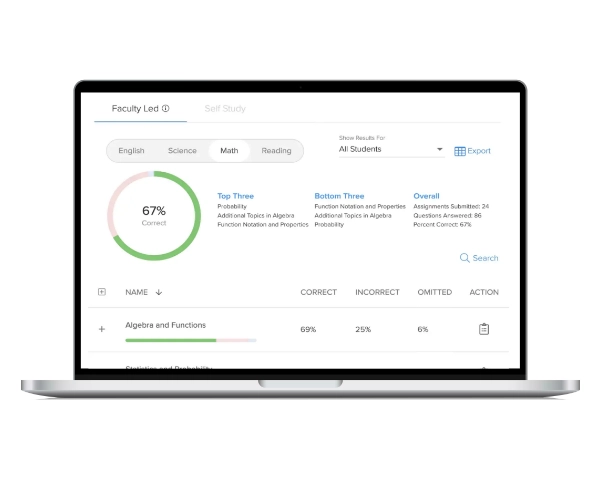In the spring of 2020, Congress made 13.2 billion dollars available to state educational agencies (SEAs) in order to provide local educational agencies (LEAs) with emergency relief funds to elementary and secondary schools in dealing with the COVID-19 pandemic.
This emergency relief was titled the Elementary and Secondary School Emergency Relief (ESSER) Fund, and it was part of the first stimulus bill known as the Coronavirus Aid, Relief, and Economic Security Act, more commonly referred to as the CARES Act.
With the passage of a second stimulus bill in December of 2020, more help is on the way for state and local educational agencies.
Passed by Congress and signed into law on December 27, 2020, the Coronavirus Response and Relief Supplemental Appropriations (CRRSA) Act provides an added 54.3 billion dollars for ESSER II Fund.
Most of the requirements for ESSER and ESSER II are the same, but there are some noticeable differences in the awarding, services, reporting, and period of fund availability, which we will highlight in this post.
First, some similarities of the ESSER and the ESSER II funds. . .
- Though ESSER and ESSER II funds are based on the Title I formula (90% of funds allocated to LEAs based on Title I shares), neither of these are Title I funds, nor are they subject to every Title I spending rule.
- Both ESSER and ESSER II funds are allowable to be used for pre-award costs dating back to March 13, 2020 (the date a national emergency was declared due to the COVID-19 pandemic).
- Funds received from both ESSER and ESSER II are permitted to be used for preventing, preparing for, and responding to COVID-19. According to the U.S. Department of Education, LEAs may use the funds for:
- Providing principals and others school leaders with the resources necessary to address the needs of their individual schools
- In their ESSER II fact sheet, the Office of Elementary & Secondary Education (OESE) notes that “additional” LEA allowable uses under both the CARES Act and the CRRSA Act that prevent, prepare for and respond to COVID-19 are: “addressing learning loss, preparing schools for reopening, and testing, repairing, and upgrading projects to improve air quality in school buildings.”
- Training and professional development for staff of the local educational agency on sanitation and minimizing the spread of infectious diseases
- Providing mental health services and supports
- Purchasing educational technology (hardware, software, and connectivity) for students that aids in the regular and substantive educational interaction between students and their instructors, which may include assistive and adaptive technology
Find the full and detailed list of how LEAs can use funds here (beginning on page 11).
- For both the ESSER and the ESSER II, funds are deemed “awarded” when a local educational agency (LEA) receives a subgrant from the state educational agency (SEA).
Now, some notable differences between the ESSER and ESSER II funds . . .
- ESSER funding is available for obligation to SEAs and subrecipients through September 30, 2022. ESSER II funding is available for obligation by SEAs and subrecipients through September 30, 2023.
Note: Given the shorter remaining period of availability, all remaining ESSER funds
should be used before making use of ESSER II funds.
- ESSER funds must be awarded by SEAs within one year of receiving them (April through June 2021, determined by specific award date). Similarly, ESSER II funds must be awarded by SEAs within one year. However, the ESSER II deadline will be January 2022.
- Under the CARES Act, any LEA that received ESSER funds were required to provide equitable services to non-public school students and teachers just as they would under section 1117 of Title I, Part A of the Elementary and Secondary Act (ESEA).
Note this important difference . . .
Unlike the CARES Act, the CRRSA Act provides an entirely separate program of assistance for non-public schools. Non-public schools may apply to an SEA for emergency services or assistance through this program. Therefore, under ESSER II, LEAs are not required to provide equitable services.
- ESSER funds and ESSER II funds must be tracked separately from each other for reporting purposes.
Find the complete fact sheet from the Office of Elementary and Secondary Education (OESE) here. This fact sheet is a side-by-side comparison of the initial Elementary and Secondary School Emergency Relief (ESSER) Fund and the ESSER II Fund, which was a part of the Coronavirus Response and Relief Supplemental Appropriations Act (CRRSA) enacted on December 27, 2020.
Did you know that funding for supplemental curricula, like UWorld’s online Learning Tools for AP® Courses, is allowable with both ESSER and ESSER II funds? Our innovative Learning Tools for AP courses and exams are modeled after AP curricula and are specifically designed for test-taking success. Click here to discover how UWorld can help you decrease teacher workload and increase student success at the same time.




